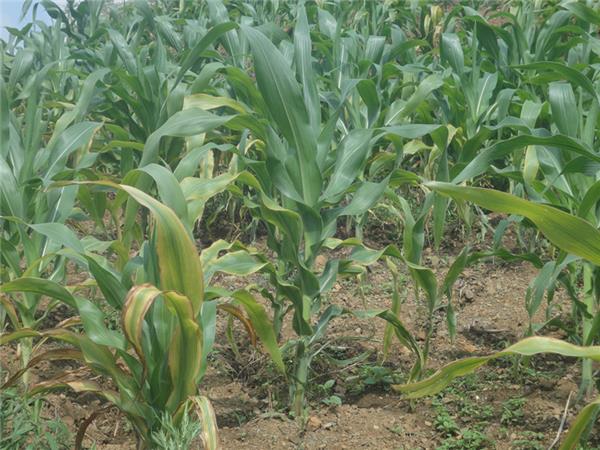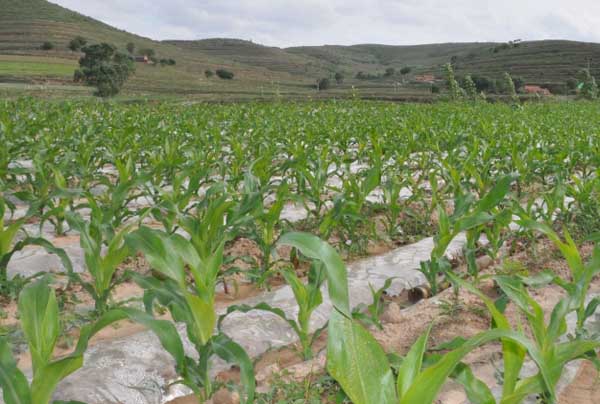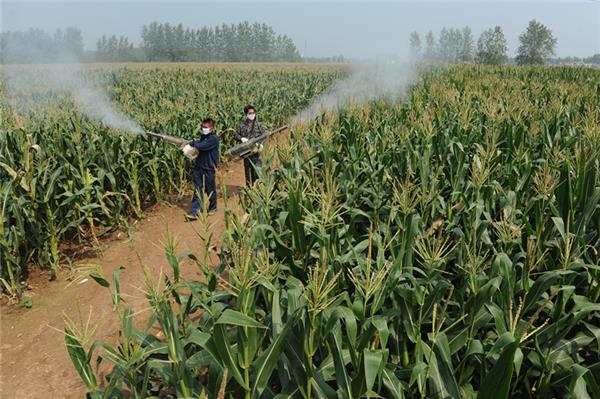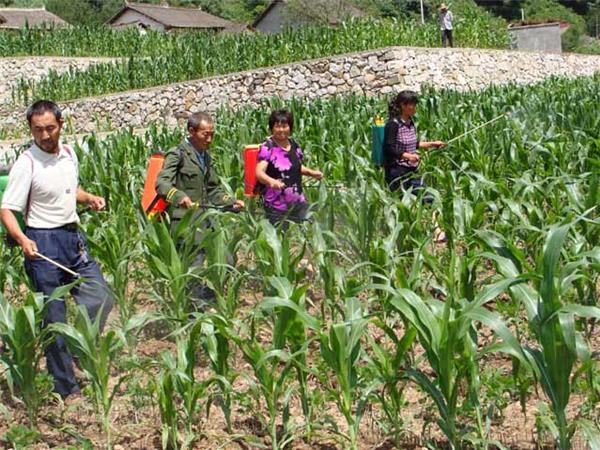Control methods of Maize Diseases and insect pests
Corn is often damaged by various diseases and insect pests in the production process, and the yield must be seriously reduced. For example, in the epidemic year of Yan big spot disease, the yield can be reduced by 15-30% due to disease, and the yield of seriously ill fields can be reduced by more than 50%; the damage of corn borer usually reduces the yield of corn by about 10%, and in serious years, the yield can be reduced by about 30%. There are many kinds of diseases and insect pests that harm corn. The main diseases are big spot disease, small spot disease, head smut disease, bacterial wilt disease, ear and kernel rot disease and virus disease. In some areas, the serious diseases are sheath blight, brown spot disease, rust disease, round spot disease, gray spot disease, etc.; the main pests are corn borer, cutworm, armyworm, red spider, etc.

Corn pest control
1, corn smut: common name gray bag. The spores overwinter on soil, manure or diseased plants. In the second year, chlamydospores germinate to produce microspores, which are scattered by wind to infect maize plants. Damage plant stem, leaf, female ear, male ear, axillary bud and other young tissues above ground. The injured part expanded into tumor, with envelope, white at first, then gradually turned black, the membrane ruptured and scattered black powder, both thick chlamydospores. The control method comprises the following steps of: (1) selecting a disease-resistant variety;(2) eradicating the diseased seedlings in the middle stage; and (3) cutting the diseased plants, wherein the diseased tumors are cut before blackening and the diseased plants are taken out of the field and deeply buried or collectively burned.
2, corn head smut, also known as Umi. It mainly infects female ears and male ears of maize, and generally shows symptoms after ear emergence. The disease lies in early prevention, mainly seed treatment; frequent disease plots should be rotated for more than 3 years.

3, corn gray spot disease: also known as cercospora leaf spot disease, corn mold spot disease. It is one of the most serious diseases in recent years. Generally, rainy years from July to August are easy to cause disease, mainly damaging leaves. At the beginning, oval to rectangular gray to light brown spots without obvious edges were formed on the leaves, and later they became brown. When humidity is high, gray mold is produced on the back of the lesion. Control methods: (1) timely removal of dead bodies after harvest;(2) large-area rotation;(3) strengthen field management, timely drainage after rain to prevent moisture retention. (4)At the early stage of disease, spray 500 times solution of 75% Baijunqing WP or 600 times solution of 50% multi-bacteria WP, 800~900 times solution of 40% Kewensan EC and 1000 times solution of 20% Triadimefon EC.
4. Corn leaf spot disease: Corn leaf spot disease can occur from seedling stage to mature stage, and the disease is serious after corn tasseling. It mainly damages leaves, leaf sheaths and wrapped leaves. The pathogen is fungal disease. 7-8 The maize is in jointing stage, the temperature is suitable for disease occurrence and epidemic, if the rainfall days are many, the field relative humidity is high, the disease is serious. Continuous cropping of maize, insufficient fertilization, especially after tasseling, low-lying, poor drainage, too late sowing are conducive to disease. Prevention measures: (1) Select disease-resistant varieties;(2) Strengthen management, control bacteria sources, remove the old leaves in the lower part, and increase the application of phosphorus fertilizer;(3) Spray 50% carbendazim WP or 70% thiophanate-methyl WP and 65% zebrazine WP 500 - 800 times per mu, spray 60 kg per mu, spray once every 7 - 10 days, and spray 2 - 3 times in total.
5, corn moth: in the big bell stage, choose "3% phoxim" granules to control. 6, corn aphid: in the occurrence period of the spot, choose "10% imidacloprid" control.

control methods
To control this disease, we should select resistant varieties, strengthen cultivation management and use necessary chemicals.
1. Select high-yield, high-quality and disease-resistant varieties. At present, there are many disease-resistant varieties selected in our province. According to the actual local conditions, disease-resistant and disease-resistant varieties are selected to avoid planting susceptible varieties in large areas, so as to prevent the occurrence and epidemic of diseases.
2. Strengthen cultivation management. (1)Elimination of residual body, control of primary infection source: after corn harvest, timely tillage, completely eliminate the residues of diseased plants inside and outside the field, centralized treatment of straw, as fuel or high temperature fermentation as compost. (2)Crop rotation: due to the accumulation of more disease bodies, large number of bacteria, serious disease occurrence, therefore, the implementation of crop rotation can reduce the incidence. (3)Early sowing at appropriate time, shortening the number of days in rainy season and avoiding the peak period of disease occurrence. (4)Reasonable close planting, and remove the bottom 2~3 leaves, reduce the humidity in the field, make the plant grow healthy, improve disease resistance. (5)Reasonable fertilization and watering: apply sufficient base fertilizer, increase phosphorus and potassium fertilizer, apply appropriate nitrogen fertilizer at ear stage, irrigate reasonably, pay attention to drainage and waterlogging prevention.

3. Chemical control. Spraying timely before and after heading stage or early stage of maize disease. Commonly used agents are: 50% carbendazim WP 500 times solution, or 75% chlorothalonil WP 500 times solution, or 70% thiophanate-methyl WP 500 times solution, spray once every 7~10 days, 2~3 times in succession.
The comprehensive control measures should be adopted on the premise of distinguishing the primary and secondary and determining the key points of prevention and control, so as to achieve the effect of twice the result with half the effort.
Or 70% thiophanate-methyl WP 500 times solution, spray once every 7~10 days, 2~3 times continuously.
The comprehensive control measures should be adopted on the premise of distinguishing the primary and secondary and determining the key points of prevention and control, so as to achieve the effect of twice the result with half the effort.
Related
- Wuhan Hospital Iron Tree Blooming Result Was Instantly Frightened by the Gardener Master
- Which variety of camellia is the most fragrant and best? Which one do you like best?
- What is the small blue coat, the breeding methods and matters needing attention of the succulent plant
- Dormancy time and maintenance management of succulent plants during dormancy
- Minas succulent how to raise, Minas succulent plant pictures
- What are the varieties of winter succulent plants
- How to raise succulent plants in twelve rolls? let's take a look at some experience of breeding twelve rolls.
- Attention should be paid to water control for succulent plants during dormant period (winter and summer)
- Watering experience of twelve rolls of succulent plants
- Techniques for fertilizing succulent plants. An article will let you know how to fertilize succulent plants.



